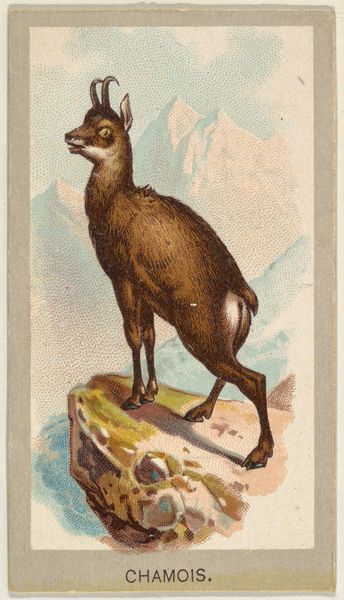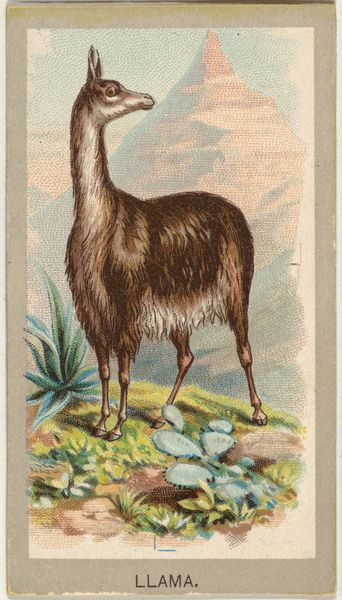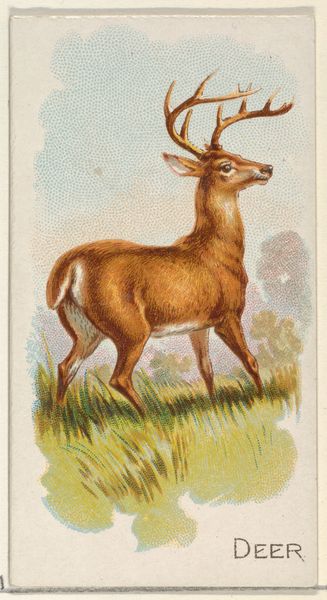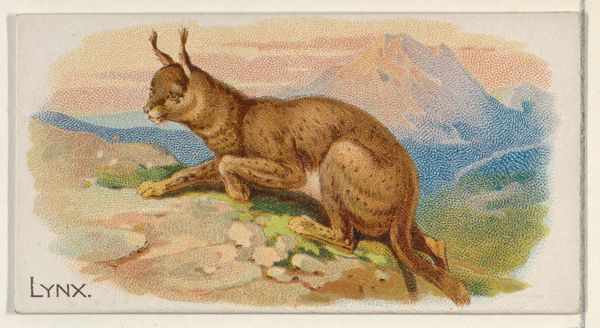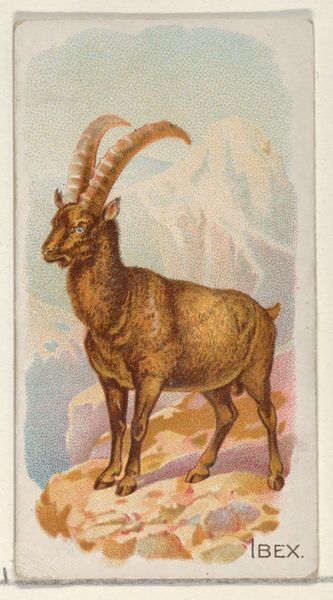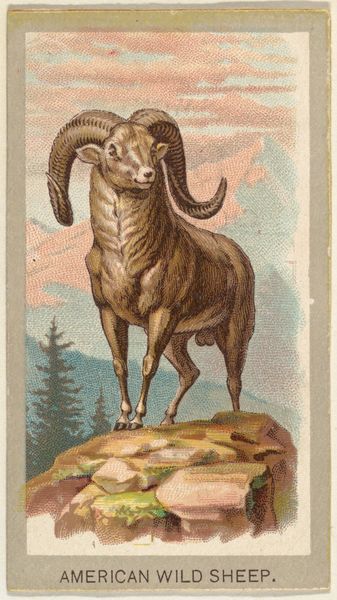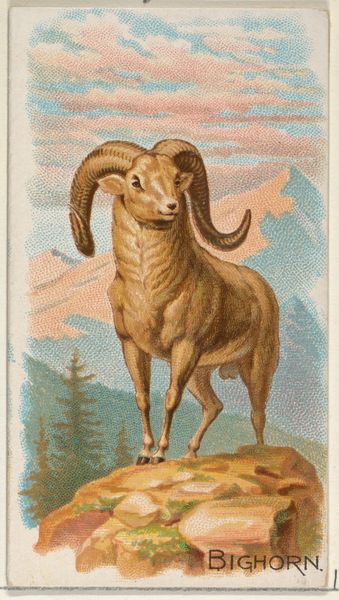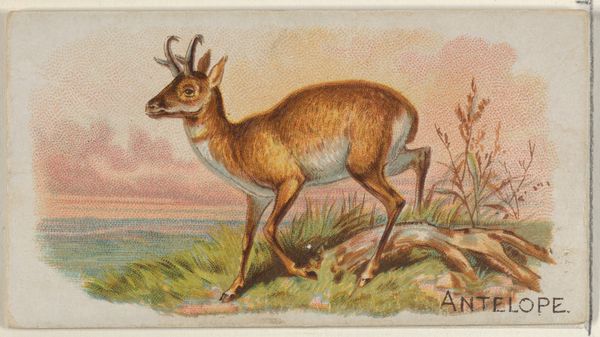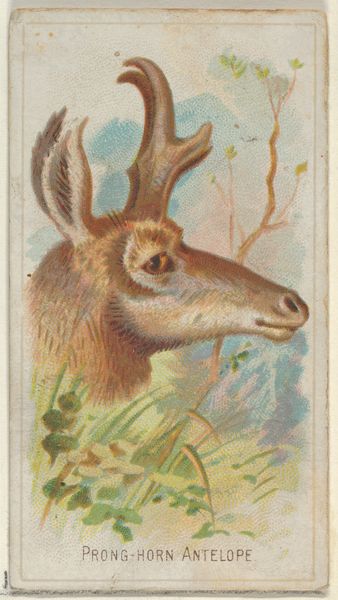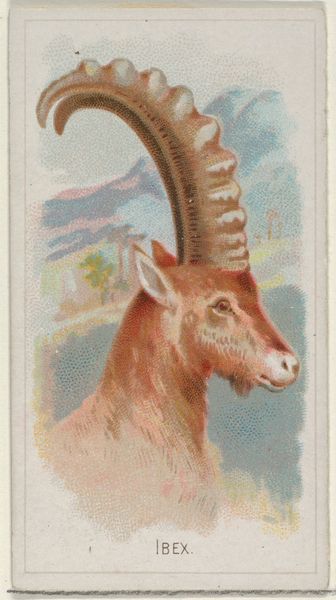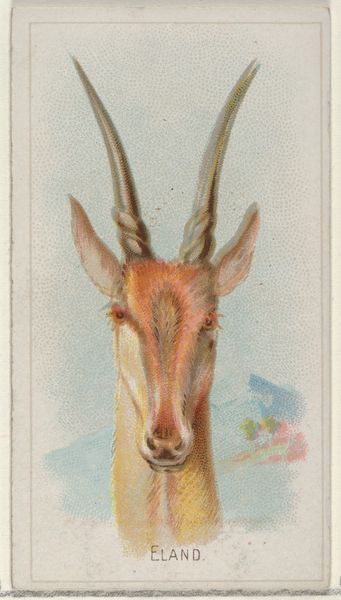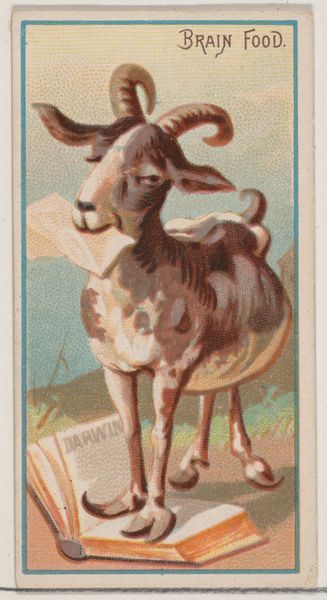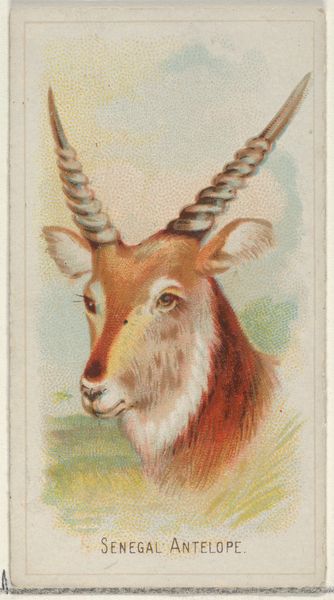
Chamois, from the Quadrupeds series (N21) for Allen & Ginter Cigarettes 1890
0:00
0:00
drawing, coloured-pencil, print
#
drawing
#
coloured-pencil
# print
#
coloured pencil
#
realism
Dimensions: Sheet: 2 3/4 x 1 1/2 in. (7 x 3.8 cm)
Copyright: Public Domain
Curator: This peculiar little gem is titled "Chamois, from the Quadrupeds series," made around 1890 by Allen & Ginter for their cigarette cards, now housed at the Met. It's such a striking colored pencil drawing and print. Editor: My first thought? That chamois has seen things, you know? It’s got this really solemn, almost burdened gaze, standing on what looks like a precipice overlooking snow-capped mountains. Curator: Absolutely! Allen & Ginter created these as collectables; imagine, nestled inside a pack of cigarettes, offering smokers a momentary escape into the animal kingdom. It's this strange juxtaposition of vice and virtue, consumption and enlightenment. Editor: It's wild, isn’t it? Think about the labour involved— the drafting, printing—all fueling a completely different kind of craving. The drawing style itself leans heavily on realism but feels idealized, right? Almost like a romantic rendering for mass production. The textured background, mimicking sky and mountain, is such an odd choice to place behind such a serious figure. Curator: Definitely, the scale here also plays tricks on you. It's miniature, like a dream distilled, yet strives for scientific accuracy—aiming to educate while enticing. The colour choices seem significant too: muted tones juxtaposed with this vibrant, living creature. It evokes this gentle reverence that reminds us of humanity's relationship with nature, tinged with imperialist exploration and curiosity. Editor: Though this was popular culture intended for mass consumption, I can't help but look at how its materiality influenced its message. The coloured pencil technique allows this sense of texture that's appealing. What was seen as popular consumption really helped expose more art, allowing for art accessibility through commodity and manufactured consumer culture. How wonderfully strange. Curator: Incredibly strange, when we place such significance to things meant to disappear. We may look at this with different eyes now, and yet still be touched by this beautiful and haunting Chamois. Editor: Indeed. And through the prism of material culture, maybe understand better what and why we collect—and what that collecting reveals about ourselves and our culture, or a society as a whole.
Comments
No comments
Be the first to comment and join the conversation on the ultimate creative platform.
